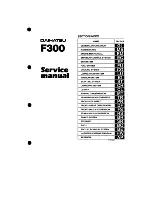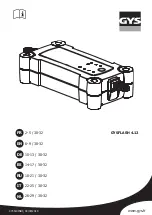
can overheat them, possibly causing a
blowout. Overloading the tires can also result
in handling or steering problems, or brake
failure.
Check the tire inflation pressure at least every
other week.
Check and adjust the tire inflation pressure
when the tires are cold (
Y
page 155).
Checking tire inflation pressure
manually
Follow the steps below to achieve correct tire
inflation pressure:
X
Remove the cap from the valve on one tire.
X
Firmly press a tire gauge onto the valve.
X
Read the tire inflation pressure on the tire
gauge and check against the
recommended tire inflation pressure on the
Tire and Loading Information placard on the
driver’s door B-pillar (
Y
page 161). If
necessary, add air to achieve the
recommended tire inflation pressure.
X
If you have overfilled the tire, release tire
inflation pressure by pushing the metal
stem of the valve with e.g. a tip of a pen.
Then recheck the tire inflation pressure
with the tire gauge.
X
Install the valve cap.
X
Repeat this procedure for each tire.
Advanced Tire Pressure Monitoring
System (Advanced TPMS)
Your vehicle is equipped with the Advanced
Tire Pressure Monitoring System (Advanced
TPMS). It measures the tire inflation pressure
in the vehicle’s tires and issue warnings in
case of pressure loss in one or more of the
tires.
The TPMS is equipped with a combination low
tire pressure/ TPMS malfunction telltale
(USA) or a low tire pressure telltale (Canada)
in the instrument cluster. Depending on how
the telltale illuminates, it indicates a low tire
pressure condition or a malfunction in the
TPMS system itself:
R
If the telltale illuminates continuously, one
or more of your tires is significantly
underinflated. There is no malfunction in
the TPMS.
R
USA only: If the telltale flashes for 60
seconds and then stays illuminated, the
TPMS system itself is not operating
properly.
The TPMS only functions on wheels that are
equipped with the proper electronic sensors.
G
Warning!
The TPMS does not indicate a warning for
wrongly selected inflation pressures. Always
adjust tire inflation pressure according to the
Tire and Loading Information placard or, if
available, on the supplemental tire inflation
pressure information on the inside of the fuel
filler flap.
The TPMS is not able to issue a warning due
to a sudden dramatic loss of pressure (e.g. tire
blowout caused by a foreign object). In this
case bring the vehicle to a halt by carefully
applying the brakes and avoiding abrupt
steering maneuvers.
G
Warning!
Each tire, including the spare (if provided),
should be checked every other week when
cold and inflated to the inflation pressure
recommended by the vehicle manufacturer
on the Tire and Loading Information placard
on the driver’s door B-pillar or, if available, the
tire inflation pressure label on the inside of
the fuel filler flap. If your vehicle has tires of a
different size than the size indicated on the
vehicle placard or the tire inflation pressure
label, you should determine the proper tire
inflation pressure for those tires.
Tires and wheels
157
Operation
463_AKB; 2; 52, en-US
d2ureepe,
Version: 2.11.7.1
2008-12-02T10:52:11+01:00 - Seite 157
Z
Содержание 2009 G 55 AMG
Страница 4: ...463_AKB 2 52 en US d2ureepe Version 2 11 7 1 2008 12 02T10 52 11 01 00 Seite 2 ...
Страница 58: ...56 463_AKB 2 52 en US d2ureepe Version 2 11 7 1 2008 12 02T10 52 11 01 00 Seite 56 ...
Страница 260: ...258 463_AKB 2 52 en US d2ureepe Version 2 11 7 1 2008 12 02T10 52 11 01 00 Seite 258 ...
Страница 261: ...259 463_AKB 2 52 en US d2ureepe Version 2 11 7 1 2008 12 02T10 52 11 01 00 Seite 259 ...
Страница 262: ...260 463_AKB 2 52 en US d2ureepe Version 2 11 7 1 2008 12 02T10 52 11 01 00 Seite 260 ...
















































